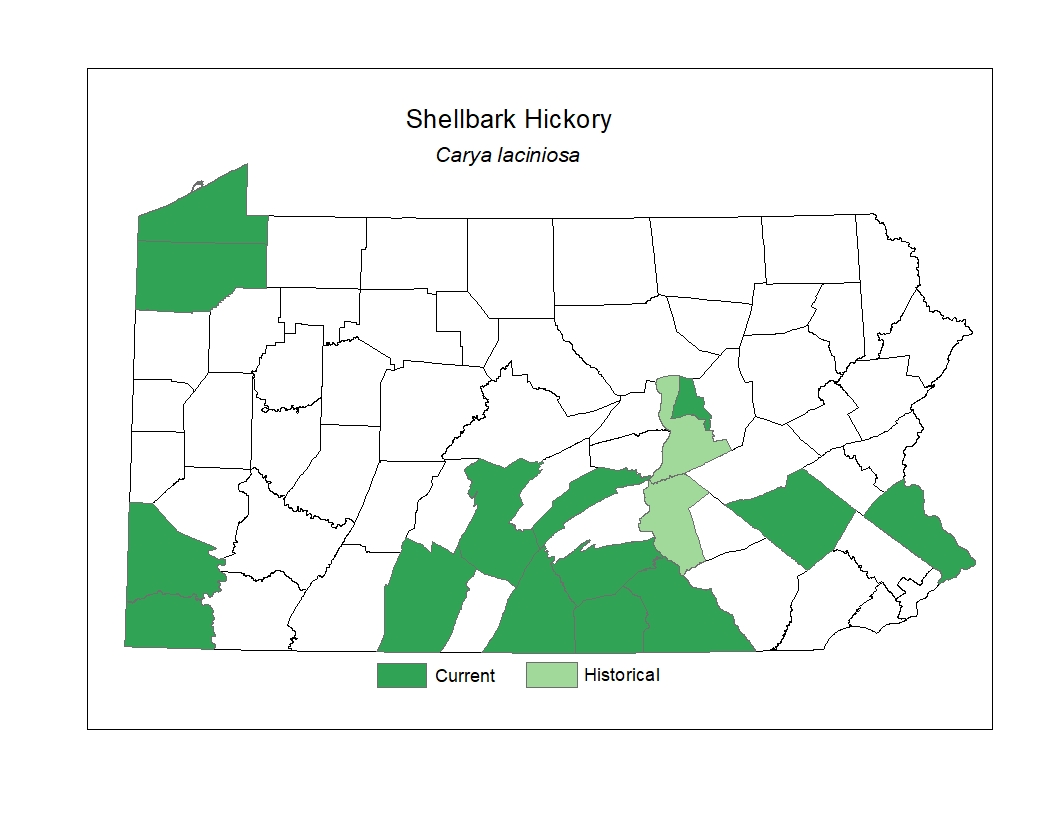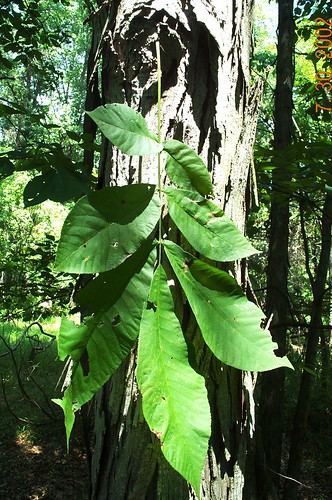 Species Factsheets
Species Factsheets
Carya laciniosa
Shellbark Hickory
State Status: N
PBS Status: SP
Federal Status:
Global Rank: G5
![]() rank interpretation
rank interpretation
State Rank: S3S4
Did You Know?
The seed of this species can be used in pies and cakes due to its sweet flavor.
Description
Shellbark hickory (Carya laciniosa) is a tall, long-lived hardwood. Its bark, from which it gets its name, is light gray and peels away in long plates or strips, and its twigs are thick with large buds.
Rank Justification
Vulnerable in the nation or state due to a restricted range, relatively few populations (often 80 or fewer), recent and widespread declines, or other factors making it vulnerable to extirpation.
Habitat
Shellbark hickory grows in wet, poorly-drained bottomland soils and flood plains; it is associated with old-growth forest stands.
Survey Dates
Distribution

Threats
Shellbark hickory is slow-growing (a sapling will not produce fruit until it is 40 years old) and its heavy seeds are not easily dispersed far from the parent tree. It's hard, heavy, yet flexible wood is harvested for use in tool handles and furniture. Because it grows slowly, it is rarely planted for shade.
Management
Shellbark hickory is of potentially great ecological importance. Its nuts provide forage for a wide variety of species ranging from ducks and quail to deer, foxes, raccoons, and small rodents. Shellbark hickory was also one of three tree species strongly preferred for foraging by insectivorous birds in a study of the birds' habitat usage (Gabbe et al. 2002). Because this species has a potentially very slow natural dispersal rate, artificial plantings may be necessary to re-establish it in its former habitat. Seedling may be grown indoors, then transplanted to desired locations; or seeds may be planted directly if provided with shelter against browsing. Grafting and budding are also effective.
Conservation Status Map

NatureServe. 2017. NatureServe Explorer: An online encyclopedia of life [web application]. Version 7.1. NatureServe, Arlington, Virginia. Available https://explorer.natureserve.org.
https://www.pfaf.org/user/Plant.aspx?LatinName=Carya+laciniosa
- NatureServe. 2018. NatureServe Explorer: An online encyclopedia of life [web application]. Version 7.1. NatureServe, Arlington, Virginia. Available at https://www.natureserve.org/explorer
- Pennsylvania Natural Heritage Program. 2018.
- Rhoads, A.F. and W.M. Klein, Jr. 1993. The Vascular Flora of Pennsylvania. American Philosophical Society, Philadelphia, Pennsylvania. Rhoads, A.F. and T.A. Block.
- 2007. The Plants of Pennsylvania: An Illustrated Manual. 2nd edition. University of Pennsylvania Press, Philadelphia, Pennsylvania.







